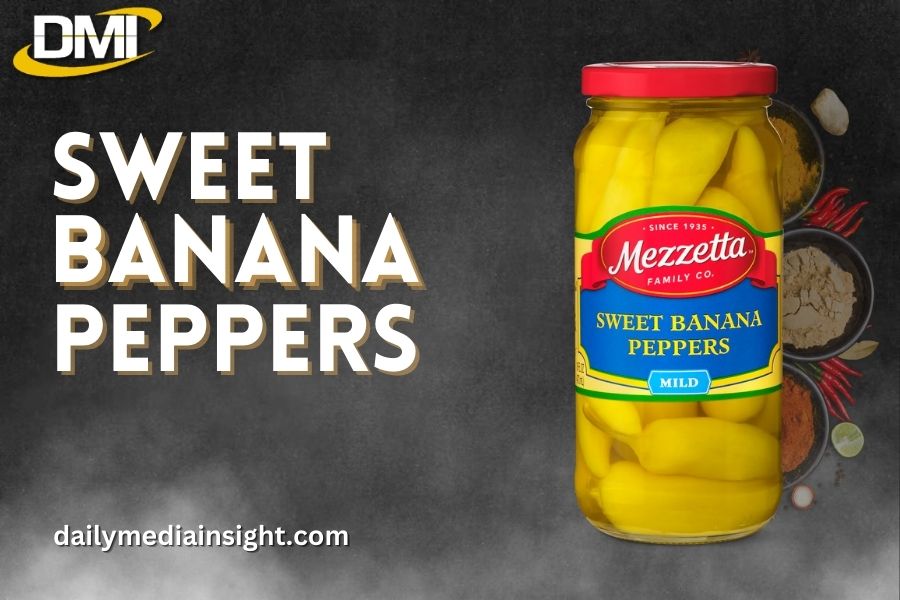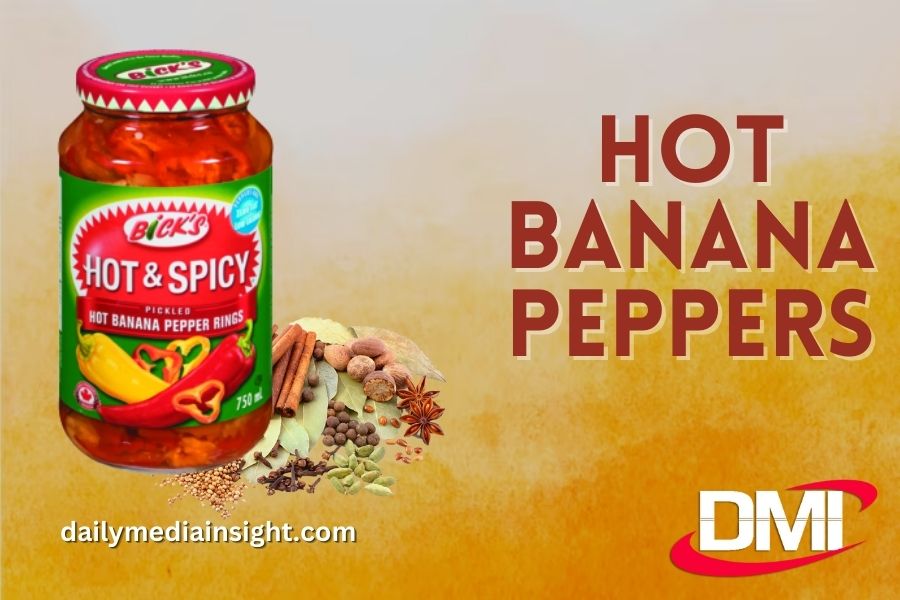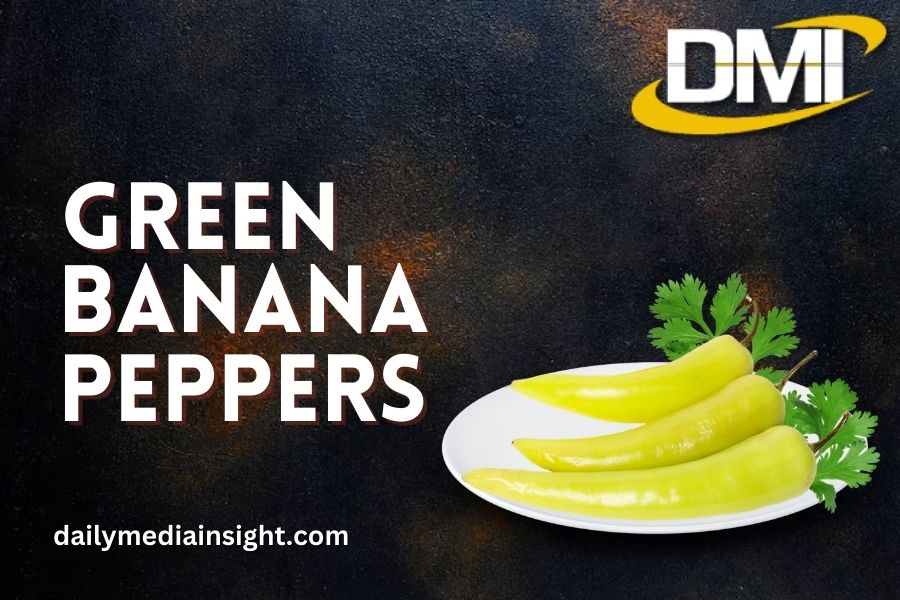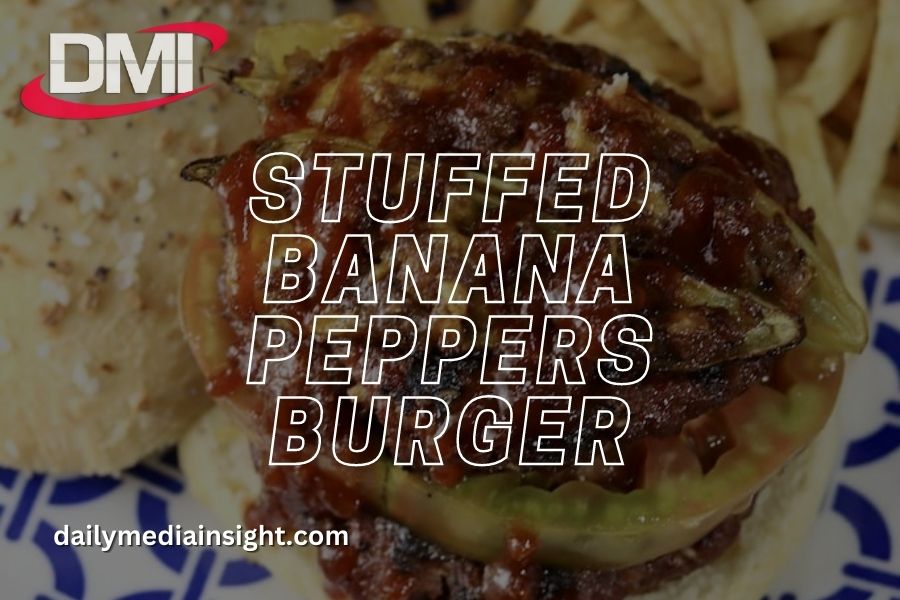Introduction
Hey there, fellow food enthusiast! Ready to embark on a delicious journey exploring the fantastic world of banana peppers? Well, you’re in for a treat! In this culinary adventure, we’ll dive into the Top 5 Banana Pepper recipes you need to know in 2023.
Whether you’re a seasoned chef or a curious home cook, these recipes will elevate your taste buds to a new level of excitement. In this blog, we’ll discuss their different types, nutritional value, health benefits, and much-awaited delicious recipes to blow your mind right away.
Popular Varieties of Banana Peppers
They are a diverse group of peppers known for their mild to moderately spicy flavor and elongated, banana-like shape. Yellow wax peppers are another popular name.
With their signature bright yellow hue, these peppers are a burst of sunshine on your plate. But don’t be surprised if you spot them in varying shades of green, red, or orange, as they gracefully ripen and transform into a spectrum of colors.
What makes the banana pepper truly special is its culinary adaptability. Pickled to perfection, it adds a zesty twist to salads and sandwiches, infusing them with a mouthwatering tang.
Stuffed with creative fillings, it becomes a delightful surprise in every bite, leaving you craving more. And when used fresh, its raw goodness enhances the flavors of countless dishes, from spicy salsas to hearty stews.
Let’s now talk about their available varieties below:
1. Sweet Banana Peppers

As the name suggests, these are the mildest of the bunch. They have quite tangy and pleasant flavors to make them a suitable fit for sandwiches, pickles, and salads. They are usually light yellow to pale green when young, turning bright yellow or orange as they ripen.
2. Hot Banana Peppers

Spicy Banana Peppers For those seeking a touch of spiciness, these fiery peppers are the perfect choice. These peppers have a spicier kick compared to the sweet variety. Although their heat level varies where some even resonate with the heat level of a mild jalapeño. Having them with dishes such as pasta, pizzas, and salsas is quite a great treat.
3. Hungarian Wax Peppers

These are medium-spicy variety peppers which also go by the name of Hot Wax Peppers. They have a waxy appearance and can vary in color from light yellow to vibrant orange or red. Hungarian wax peppers are excellent for pickling, stuffing, and grilling.
4. Red Cherry Peppers

These are small, round, and usually bright red in color. Red cherry peppers are known for their medium to high spiciness and are often stuffed with cheese or other fillings to create tasty appetizers.
5. Green Banana Peppers

Before fully ripening into their characteristic yellow, orange, or red colors, they start as green fruits. These peppers have a more robust and less sweet flavor compared to their ripe counterparts.
Banana Peppers Nutritional Value & Health Benefits
Nutritional Value
About 30 grams of banana pepper contains the following nutritional content:
Calories: 10
Total fat: 0g
Cholesterol: 0mcg
Sodium: 420 mg
Potassium: 0mg
Total Carbohydrate: 2g
Dietary Fiber: 1g
Sugar: 0g
Protein: 0g
Health Benefits
-
Low Calorie
It’s a low-calorie food which ultimately means it’s a healthy diet addition. So, if you’re health conscious or particularly weight conscious, consuming this low-calorie dish might not hurt you in the long run.
The low-calorie nature of banana peppers allows you to get creative in the kitchen without compromising taste or health. You can explore a plethora of recipes, experiment with different cuisines, and enjoy the incredible benefits they offer without any guilt.
-
Good for Brain
An average cup of banana pepper contains the recommended daily value of Vitamin B6. Vitamin B6 plays a crucial role in the production of dopamine and serotonin, essential neurotransmitters that influence various bodily functions, including motivation and communication between different parts of the body.
Ensuring an adequate intake of B6 can potentially decrease the risk of sleep disturbances, mood fluctuations, and other related concerns, promoting overall well-being.
-
Loaded with essential minerals
Banana peppers are packed with essential minerals like calcium and magnesium, but their standout feature lies in their high potassium content.
A mere 33-gram serving of banana pepper offers around .12 grams of potassium, which might not fulfill your daily requirement entirely but is noteworthy considering the small serving size.
-
Might fight obesity
They are loaded with a compound known as capsaicin to enhance their spicy taste. Interestingly, capsaicin is not just about adding heat; it may also have potential benefits for combating obesity and related health issues. Studies indicate capsaicin could boost metabolism and aid in reducing body fat accumulation.
-
Good source of dietary fiber
A serving of banana pepper weighing 33 grams contains approximately 1.1 grams of dietary fiber. Fiber is fantastic because it adds volume to your food, making you feel fuller quicker, which can lead to eating less overall and consequently igniting your weight loss goals.
Cultivating Banana Peppers
With just two simple steps, you can cultivate these peppers provided some aftercare is also needed after you sow the seeds. Without any further ado, let’s jump to the ultimate steps below:
Step 1: Germinate Seedlings
This is quite a sensitive stage and you need to practice extra care while germinating the seedlings. Make sure to germinate pepper seeds indoors during the summer or spring season ideally in warm temperatures ranging 75-80 degrees Fahrenheit. Another option to consider is utilizing a heat mat to increase the indoor temperature.
You cannot overlook the planting medium as it’s one of the crucial considerations. It should be sterile and promotes stable draining throughout. Then, ensure that the planting depth shouldn’t more than ¼ inch as we’d like to keep it shallow.
At this stage of growth, it’s crucial not to overwater the seedlings of banana peppers. Water the plants only when the top layer of soil feels dry. Additionally, make sure to use potting soil instead of compost, as compost can be too nutrient-rich and might hinder their growth. Taking these precautions will help ensure the healthy development of your seedlings.
Step 2: Transplanting
Seedlings are ready to transplant when they outgrow the seedling tray. Ensure that the temperature is quite high outdoors when you transplant them. The ideal reference for temperature is more than 60 Degrees Fahrenheit.
Then, make sure that the area of transplantation receives full sun and isn’t exposed to too much wind. To thrive, they require at least 6 hours of daily sunlight and about 20 inches of spacing between each plant.
Banana peppers thrive indoors in a sunny spot if outdoor conditions are not ideal. Ensure each plant has its pot. You now have to dedicate about 60-80 days of good care for the delicious peppers to come out of the little seedlings.
Culinary Uses
Some of their famous and creative culinary uses are listed below.
- These kinds of peppers are great for pickling, adding a tangy and spicy kick to dishes.
- You can use them in salads as sliced peppers as they add a pop of color to your palette as well.
- If filled with cheese or other fillings, you can bake them to create a delicious appetizer.
- Blend them into sauces and salsas for a zesty flavor boost.
- Slice and sauté banana peppers with other vegetables for fajitas or stir-fries.
- They make sandwiches and wraps tasty while providing a subtle warmth to the dish.
Health Precautions & Allergies
While they are popular and crunchy, overconsumption can pose health risks. However, eating too many may increase cholesterol and triglycerides, leading to digestive issues due to high fiber content, and cause heartburn in sensitive stomachs.
Moderation is essential to enjoy its benefits while avoiding potential drawbacks. Balance your diet with various vegetables for optimal health. As such, there are no specific allergies detected in consuming wax peppers.
Top 05 Banana Peppers Recipes
1. Stuffed Banana Peppers

Ingredients:
- 6-8 fresh wax peppers
- 1 cup cooked and crumbled ground meat (beef, turkey, or sausage)
- 1 quinoa or cooked rice
- 1 cup of any shredded cheese
- 1/2 cup onion (diced)
- 1/2 cup tomatoes (diced)
- 2 cloves of miced garlic
- 1 teaspoon oregano (dried)
- 1 tsp basil (dried)
- Salt and pepper to taste
- Olive oil
Instructions:
- Preheat your oven to 375°F (190°C).
- Wash them and slice off the tops. Create a space for stuffing inside by removing its seeds. For milder banana peppers, soak them in cold water for 15-20 minutes before stuffing.
- On medium heat, add some olive oil to a large skillet. Then, add minced garlic and diced onions, and saute them a little.
- Now, put in the ground meat, and cook until the meat is fully browned and seasoned with salt, pepper, dried oregano, and dried basil. Stir well to incorporate the flavors.
- Remove the skillet from heat and add the cooked rice or quinoa, diced tomatoes, and half of the shredded cheese. Mix everything until well combined.
- Add this prepared mixture to your wax peppers and press them down a little to fill the cavity and put them in a baking dish.
- You can apply the remaining shredded cheese over these stuffed peppers.
- Put in the aluminum-covered baking dish Cover the baking dish in the oven for about 25-30 minutes.
- Remove the foil once your stuffed peppers are ready and let them cool for a while before serving.
Note: You can customize this recipe by adding different vegetables, and spices, or adjusting the level of heat to your liking. Bon appétit!
2. Pickled Banana Peppers with Garlic Grace

Ingredients:
- 1 pound fresh, sliced peppers into rings or left whole
- 1 cup of both apple cider and white vinegar
- 1 cup water
- ¼ cup sugar (granulated)
- 2 tablespoons pickling salt (or regular salt)
- 1 tablespoon celery seeds
- 1 tablespoon mustard seeds
- 2 cloves garlic, peeled and lightly crushed
- A pinch of red pepper flakes (optional, for a touch of heat)
Instructions:
- First, ensure your banana peppers are all cleaned and sliced into rings or kept whole – it’s your call!
- Take a saucepan and combine both kinds of vinegar with water. Stir it softly as you blend the vinegar types, water, and flavors smoothly.
- Add sugar to the pot. It will balance the spicy taste of the peppers.
- Now, add the pickling salt to the pot and help preserve your banana peppers.
- Embrace the fragrant spices! Add the delightful celery and mustard seeds to the pot to enhance the pickle’s flavor.
- Let the garlic join the party, adding a graceful touch of aroma and taste to the concoction.
- To add more thrills, gently sprinkle the red pepper flakes into the mix.
- Gently warm the pot on medium heat. Stir now and then to start pickling.
- Once the pickling solution is ready, pour it gently over the waiting peppers.
- Secure the jars with their lids, sealing in the enchantment. Let them cool gracefully, ready to perform their best on your culinary stage.
- Now comes the hardest part – patience! Let the pickled banana peppers sit in the fridge for 24 hours to develop their flavor. Your taste buds will applaud the result.
Note: As you savor this pickled dish, remember that its flavor will continue to develop over time. So, let them age gracefully and enjoy the journey of taste!
3. Banana Peppers and Chicken Stir-Fry

Ingredients:
- 1 pound of skinless, boneless, thinly sliced chicken breasts
- 2 thinly sliced peppers (banana)
- 1 onion, thinly sliced
- 2 pieces of minced garlic
- 2 tablespoons soy sauce
- 1 tbsp of oyster sauce
- 1 tablespoon cornstarch
- 1/4 cup water
- 2 tablespoons vegetable oil
- Salt and pepper to taste
- Rice (cooked)
Preparation:
- Prepare the mixture of all sauces in a small bowl. Take the soy sauce, cornstarch, oyster sauce, and water. Blend well together and set them aside.
- Take a pan and heat the veggie oil in it. Now, cook the sliced chicken for about 3-4 minutes until it’s no longer pink in color.
- Then, stir-fry minced garlic, banana peppers, and onions together for another 3-4 minutes until cooked soft.
- As soon as the sauce has been added to the chicken and vegetables, stir them together and cook for another 1-2 minutes until the sauce has thickened and coated them evenly. Add salt and pepper to taste.
- Serve the Banana Pepper Chicken Stir Fry over cooked rice and enjoy your delicious and easy homemade meal!
4. Stuffed Banana Peppers Burger

Ingredients:
- 1 pound ground beef (or any ground meat of your choice)
- 4 large wax peppers
- 1/2 cup shredded cheese (cheddar or any cheese of your choice)
- 1/4 cup bread crumbs
- 1 egg
- 1 teaspoon garlic powder
- Salt and pepper to taste
- Hamburger buns and burger toppings (lettuce, tomato, onion, etc.)
Preparation:
- Preheat your grill or stovetop grill pan to medium-high heat.
- Combine the ground beef, garlic powder, egg, shredded cheese, salt, bread crumbs, and pepper in a mixing bowl. Mingle everything together.
- Wash the peppers, and remove their seeds and membranes to slightly cut off their spiciness.
- Stuff your yellow wax pepper with the mixture of ground beef. Press the meat down gently to make sure it’s well injected.
- The meat should be grilled for approximately 4-5 minutes on each side or until it is fully cooked.
- Toast and grill the hamburger buns until light brown. Then, add your favorite burger toppings with stuffed banana peppers and serve!
Optional: You can add a slice of cheese on top of each stuffed banana pepper during the last minute of grilling to make it even more flavorful.
5. Fresh Tomato Salad

Ingredients:
- 4 large ripe tomatoes, sliced
- 2 banana peppers, thinly sliced
- 1/4 cup red onion, thinly sliced
- 2 tablespoons fresh basil leaves, chopped
- 2 tablespoons olive oil
- 1 tablespoon balsamic vinegar
- Pepper and salt to taste
Preparation:
- Wash the tomatoes and thinly slice them. Arrange them nicely on a salad platter.
- Thinly slice the peppers and red onion. Add them to the platter with the sliced tomatoes.
- Sprinkle the chopped basil leaves over the tomatoes, yellow wax pepper, and red onion.
- Whisk together the olive oil, salt, pepper, and balsamic vinegar in a small bowl to make the dressing.
- Drizzle this dressing over your salad, and toss everything gently to combine.
FAQs
Q.1 What do you eat raw banana peppers with?
You can eat them raw as a crunchy and flavorful addition to salads, and sandwiches, or as a snack on their own.
Q.2 What are the different ways to preserve them?
Different ways to preserve these peppers include pickling, freezing, and drying.
Q.3 Do banana peppers burn belly fat?
According to Nourish by WebMD, they contain a compound called capsaicin that may help improve the metabolism of your body and reduce its accumulation of fat.
Q.4 How long do these peppers stay fresh?
They stay fresh for about 1 to 2 weeks when stored in the refrigerator.
Q.5 Are banana peppers bad if the seeds are brown?
Brown seeds in these peppers are a natural occurrence and do not indicate spoilage. The peppers can still be safe to eat as long as they show no signs of mold, foul odor, or other signs of deterioration.
Conclusion
In 2024, as culinary explorations continue to flourish, a variety of these peppers have risen to claim their rightful place as the vibrant stars of the kitchen.
From zesty and fiery to mild and sweet, these versatile peppers have unlocked a treasure trove of flavors for adventurous food enthusiasts.
In this journey of gastronomic delight, we’ve discovered five captivating recipes that beckon you to savor the essence of Banana Peppers in ways you’ve never imagined.

![Banana Peppers: Top 5 Recipes You Need To Know In [current-date format='Y'] Banana Peppers](https://dailymediainsight.com/wp-content/uploads/2023/08/Banana-Peppers.jpg)


![Delicious Oreo Cakesters Recipe To Try In [current-date format='Y'] (Updated) Oreo Cakesters 2](https://dailymediainsight.com/wp-content/uploads/2023/04/Oreo-Cakesters-2-540x400.jpg)